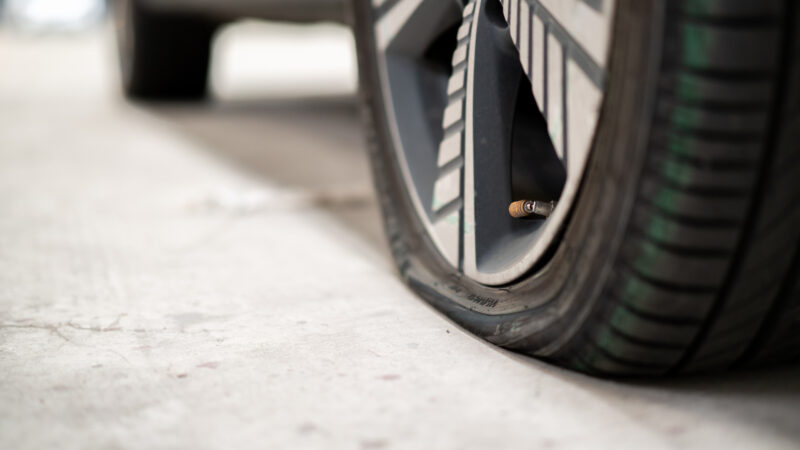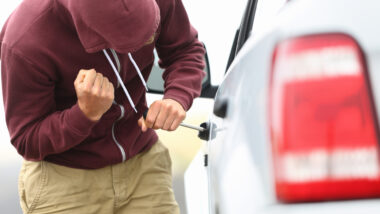Table of Contents Show
Flat tires are pretty much every RVer’s worst nightmare. They not only cause tremendous damage to your precious RV but also create a dangerous situation.
Consider yourself lucky if you’ve never experienced it. However, driving on a flat tire can cause the predicament to go from bad to worse in the blink of an eye.
Today, we’re sharing what happens when you drive on a flat tire and some tips to help you avoid it. Let’s get started!
Is Driving on a Flat Tire Dangerous?
When it comes to terrible ideas drivers may have, driving on a flat tire is near the top of the list. Drivers need stability and control when it comes to their tires.
However, a flat tire provides neither of those. Driving on a flat tire is extremely dangerous and is something that you should avoid at all costs.
While there’s never a convenient time to experience a flat tire, you can make the situation substantially worse by driving on it. That puts you and other drivers in danger. It’s one risk that we don’t think is worth taking.
What Happens When You Drive on a Flat Tire?
When you drive on a flat tire, there’s tremendous friction between the tires and the road’s surface. The faster and longer you drive on the tire, the more heat gets generated from the friction. This causes the rubber compounds in the tire to break down and fall apart as you travel down the road.
In addition to having nearly no control, the tire will fly around as it rotates on the wheel. This can beat up your vehicle’s wheel well and cause severe damage.
If the metal rim contacts the road while you’re driving, you’ll likely do enough damage that you’ll need to replace more than just the tire. A new rim isn’t cheap, especially if the ones on your vehicle are hard-to-find.
Should You Drive Even 1 Mile on a Flat Tire?
Driving any distance on a flat tire is generally a bad idea. However, there are instances where you may need to go a short distance to reach safety or get help. But it’s better to drive on a tire that’s low on air than on a flat tire.
If your tire is simply low on air or has a slow leak, you may be able to drive a mile or two on it. However, if your tire is flat, if you can, you should avoid driving on it.
Can You Pump Up a Flat Tire?
Whether or not you can pump up a flat tire depends on the cause of the flat. If you have a small hole causing the air to leak out slowly, you can pump it up as a temporary fix.
Depending on how quickly the tire leaks air, pumping up the tire may allow you to drive your vehicle to the tire shop to fix it.
Unfortunately, not every flat tire is the result of a slow leak. You could run over an object in the road that creates gashes or cuts. In these situations, the air will leak out of the tires just about as fast as you can put it in. These tires will be next to useless and your time will be better spent putting a spare tire on your vehicle.
How to Prevent Flat Tires and Blowouts
You can do a handful of things to prevent flat tires and blowouts. Let’s look at some things drivers can do to help avoid finding themselves with flat or damaged tires.
Invest in a Quality TPMS
If you don’t have a quality tire pressure monitoring system (TPMS), you need to get one.
We’ve used a TireMinder TPMS since the day we first hit the road, and we wouldn’t travel without it. We traveled with the A1AS, which has saved us from a blowout more than once.
- Fit Type: Universal Fit
- Package Dimensions: 21.844 H x 12.446 L x 14.224 W (centimetres)
Using a quality TPMS allows a driver to monitor the pressure and temperature of their tires.
Should a tire experience a failure or the conditions become unsafe for driving, the TPMS will sound an alert. The driver can then find a safe place to pull over to inspect and address the problems instead of driving on a flat tire. In the event of a tire failure, it will alert you as quickly as possible to help minimize any damage.
Respect the Max Load Limit
One mistake many drivers make is overloading their vehicles. Tires can only carry so much weight, and pushing them past their limit increases the chances of a tire failure.
The max load limit is on the sidewall of a tire, along with other helpful information. However, knowing how much weight you’re putting on the tires isn’t as easy.
The best way to know whether or not you’re pushing your tires past their load limit is to weigh your vehicle.
You can do this by driving across a CAT Scale, which you can often find at many truck stops. It may cost you $12 or so to weigh your vehicle, but it’s money well spent if it helps ensure you’re staying within the capabilities of your tires.
Rotate Tires Regularly
Tires will naturally wear down over time as you drive on them. If you want your tires to last as long as possible and avoid a flat tire, you need to rotate them regularly.
Typically, you should rotate your tires every 5,000 miles, so it’s a good idea to rotate them every time you get your oil changed.
Failing to rotate your tires regularly will cause them to wear unevenly. You could end up needing to replace two of your tires prematurely. If you’ve ever purchased tires, you know they’re not cheap, and you want to get as much life out of them as possible.
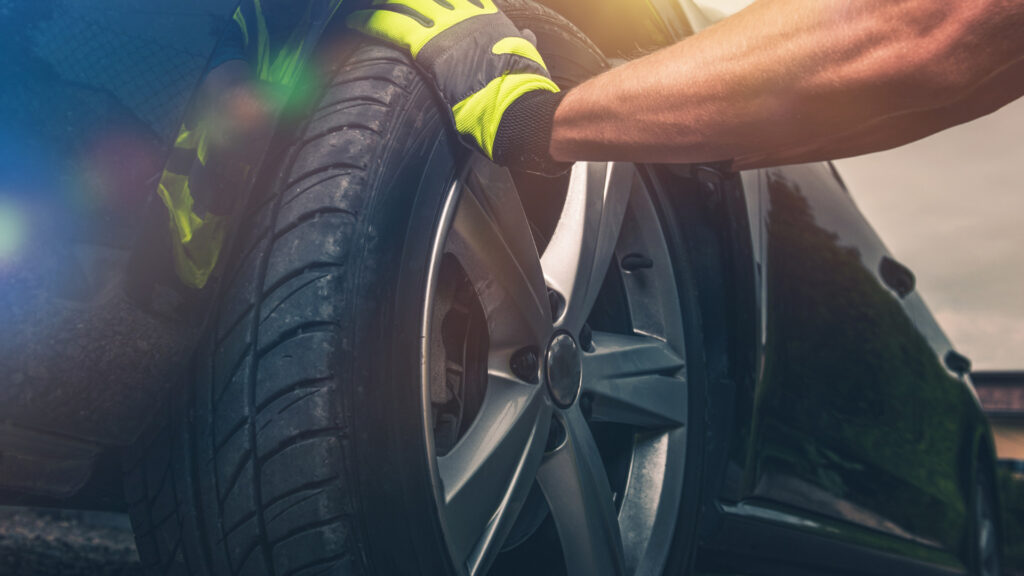
Drive Defensively
To avoid a flat tire, you must learn to be an excellent defensive driver. Being a defensive driver means constantly being aware of what’s happening around you.
This can be a necessary skill for drivers to develop to help them avoid objects in the middle of the road. You never know what will fall off another vehicle and end up in your lane.
Being able to make good decisions quickly while driving can mean the difference between a trip to the tire shop and not.
No matter how good of a defensive driver you are, you can’t always avoid some objects. However, good defensive driving habits can minimize the risks of getting a flat tire from hitting them in the road. If you can’t always avoid them, you at least want to keep the experiences to a minimum.
Pro Tip: A good set of RV tires can completely change how your RV rolls down the road! Before you purchase your tires, check out our RV Tires Buyers Guide
What Do You Do If You Have a Flat Tire?
If you are unfortunate enough to experience a flat tire, how you handle the situation matters.
You can make the situation better or worse by how you respond. So let’s examine what you must do if you have a flat tire while driving.
Pull Over Quickly But Safely
If the low tire pressure light on your dashboard lights up or you hear the tire fail, you must pull over as quickly as possible.
However, you still need to check and make sure it’s safe to change lanes and maneuver. Failure to do so could result in a serious accident or a few horns from your fellow drivers.
If you’re on an interstate or highway, find a safe place to pull over on the shoulder of the road. You want to have as much distance between you and passing vehicles as possible, especially if the flat tire is on the driver’s side. If you’re traveling in town or a more populated area, find the nearest parking lot to pull into so you’re off the road and out of traffic.
Put Out Emergency Cones or Lights
You want to alert drivers that you’re experiencing an emergency so they have time to get over and out of the way.
If you have cones or other lights, this is a great time to use them. If not, the least you can do is turn on the hazard lights for your vehicle.
These situations are prime examples of why we recommend carrying an emergency roadside kit in your vehicle. These kits often provide cones, lights, and other necessary equipment to help keep you safe no matter why you’re stuck on the side of the road.
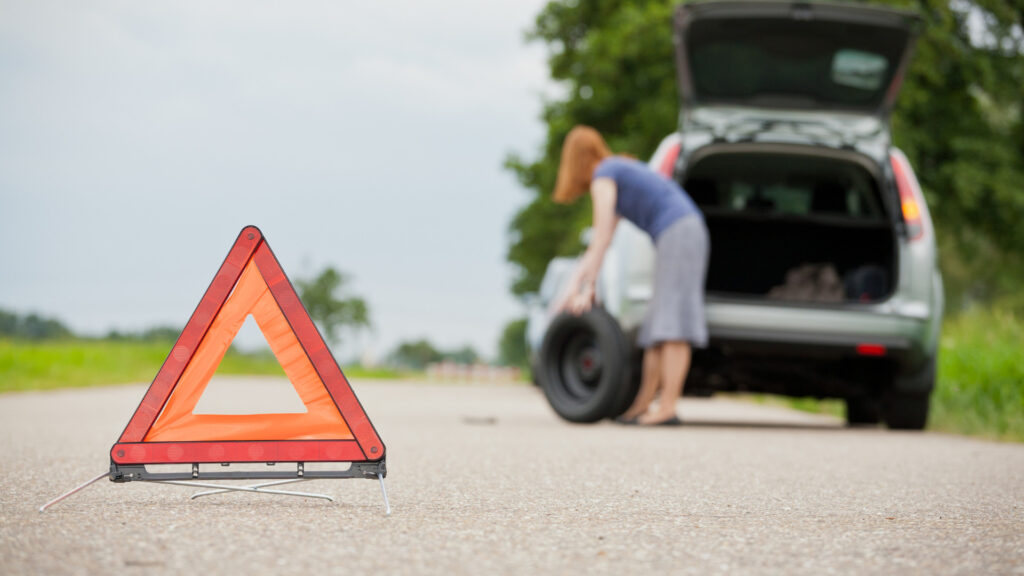
Replace With Your Spare (If You’re Comfortable Doing So)
If you’re comfortable replacing the flat tire with your spare, now is the time to do so. However, ensure you have plenty of space between you and passing vehicles. You don’t want to step back or have one of your limbs run over by a passing driver.
You’ll need the proper equipment and knowledge to replace a tire. This can be a physically demanding task that not everyone should attempt. If not done right, you could put yourself, your vehicle, and others in a dangerous situation.
However, if you have the proper tools and know what you’re doing, you and your vehicle can be back on the road in 10 or 15 minutes.
Call Roadside Assistance
If you’re uncomfortable replacing the tire or don’t have the appropriate gear, you’ll need to call roadside assistance.
Unfortunately, response times for roadside assistance can vary considerably and greatly depend on your location and the location of the assistance. You could wait anywhere from 20 minutes to a couple of hours for help to arrive.
Keep in Mind: Is Coachnet Really the “Best RV Roadside Assistance?” Let’s find out!
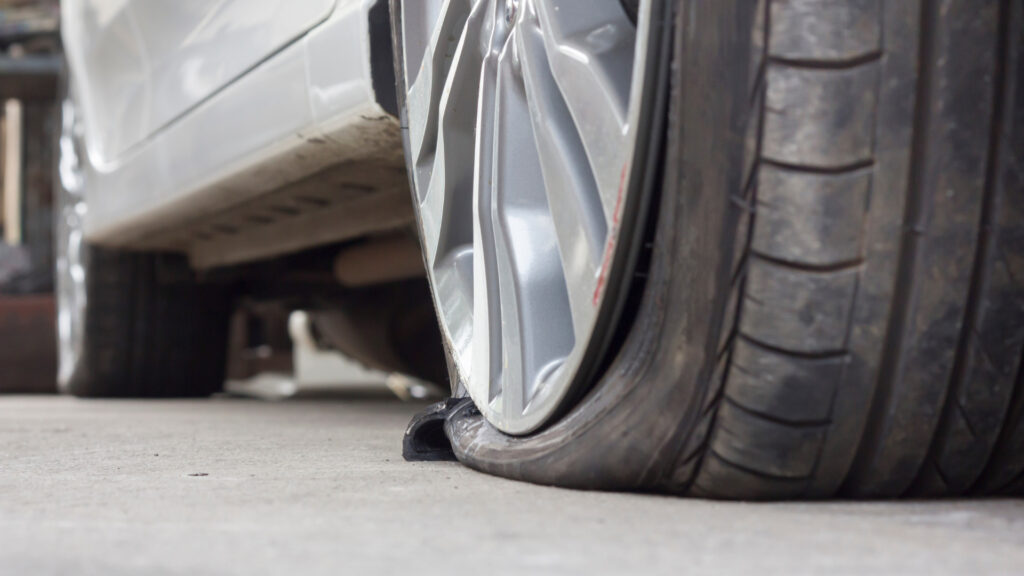
Wait in Your Vehicle, Not on the Side of the Road
When you’re on the side of the road with a flat tire, the safest place for you and others in your vehicle to wait is inside. The side of the road can be extremely dangerous, especially if passing drivers aren’t paying attention.
If they happen to hit your vehicle, you stand a better chance if you’re inside than standing on the side of the road.
Have a Safety Plan in Place for the Next Time You Get a Flat
The more you can plan, the more prepared you’ll be should you experience a flat tire. Having a plan for how you should respond can help reduce the fear and stress created in these tense situations.
Make sure you have the phone numbers for roadside assistance quickly available. Know what supplies and equipment you have on hand. If you want to be able to change a tire, make sure you always have the appropriate tools for the job.
When done right, you can be back on the road and head to your next adventure in no time.
Last update on 2024-12-25 / Affiliate links / Images from Amazon Product Advertising API




